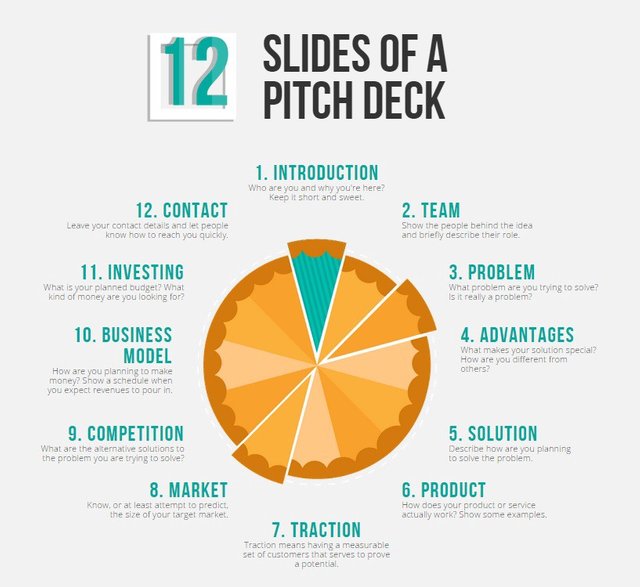Business Plans Are A Necessary Evil for the Blockchain World — This Is How You Can Write One
BY CRYSTAL STRANGER, CO-FOUNDER, PEACOUNTS ON MAY 29TH, 2018 AT 4:30 PM
 BY CRYSTAL STRANGER, CO-FOUNDER, PEACOUNTS ON MAY 29TH, 2018 AT 4:30 PM
BY CRYSTAL STRANGER, CO-FOUNDER, PEACOUNTS ON MAY 29TH, 2018 AT 4:30 PM
Image by Budapest Business Journal
Blockchain is the biggest innovation since the formation of the internet. The race is on for companies to reinvent all industries and products using blockchain and virtual currencies to improve efficiency and decentralize many transactions. From property transfers, to supply chain, to music streaming, the applications are nearly endless.
Initial Coin Offerings (ICOs) have rewritten the way businesses raise funds by allowing companies to approach individual investors to purchase a token related to their company, rather than selling part of the company or borrowing money. Some of this tokenization is considerably similar to selling stock, but other ICOs sell a token that is used directly in the business’s virtual ecosystem and carries an inherent value. Either way, this has proved to be a major source of funds for startups. So with this grand new economy and the possibility for funding, one question looms: Do you still need a business plan and/or slide deck?
Image by American Asphalt
A company issuing an ICO will need a whitepaper describing the token and its usage. Many entrepreneurs think this is sufficient and they do not need a business plan or slide deck. Writing a business plan can be tedious and when launching an ICO, it is a very busy time. I can attest to that. My company, PeaCounts, an AI- and blockchain-based accounting system for small businesses, is in the midst of an ICO as I write this. I can understand the allure of skipping the headache of writing a business plan, but doing so comes at a cost.
The focus gained from making solid plans is priceless. Isn’t it better to use a GPS or Google Maps than to follow one of those folded paper maps? And isn’t even the folded paper map better than driving up and down each street to figure out how to get where you need to go? A business plan is the map for your business to follow.
Writing a business plan doesn’t need to be a formal process. If the document is just for internal use (at least for now), you can just make a simple pitch deck using PowerPoint or Keynote. Note: I call this type of document a “business plan,” but the concepts apply to a pitch deck, too, although a pitch deck can also be simplified and should tell a story.
What to include in your pitch deck / Shawna Chen
Going through the process yourself is critical, which is why I’m not a big fan of business-plan-building software. It is better to have an informal business plan that hits all the important content, than a business plan that sounds like it was written by an MBA but doesn’t really say anything. The passion that you express when writing the plan is what is important. Nobody can describe your baby the way you can, and if you can’t explain this dream
on paper, how can you communicate your vision so it materializes in the real world?
If you want to add some of the stories and pieces that will make this a good sales tool for those VC meetings down the line, that doesn’t hurt either. But what is really important here is creating a blueprint for success. The following is the order of how I normally write a plan, and I’ve left off any elements that cross over with a whitepaper.
1. Mission/Values Statement
Clarifying the “why” of your product or service will get you further in business than focusing on the “what,” and you should set this straight from the beginning. The greatest companies of all time understand this and focus everything from marketing messages to company events on why they are important. The “why” for us at PeaCounts is to make the lives of small business owners easier by automating bookkeeping. My team and I feel very passionately about this. It is what gets me out the door and onto a plane for the next meeting.
Having a mission you believe in sets the standards to which you want to be upheld. Setting company values for how you treat customers, employees, and the world not only creates a better environment, but is a good place to start for any sales or marketing campaign.
2. Competition
It is critical to break down your competition and outline what they are doing right and wrong. Many people just use this section as a salesy part to say why they are better than everything out there, but that isn’t helpful.
What you want to do here is learn from your competitor’s mistakes. Review their advertising campaigns, see which keywords they target for SEO, check if you get any retargeting ads when you go back to google and Facebook. Search their name with “sucks” following it to get an idea of the complaints their clients have and how you can resolve these.
3. Marketing Plan
Until you know how much it costs to acquire a customer, you don’t have a business. Here you must figure out the ways you will market to acquire the clients and how much this will cost.
How can you figure this out? Run tests. With sources such as Craigslist and Facebook Ads, you can run ads with a very small budget and get an idea of how excited your prospective customers are about your product. You can even test out marketing ideas and pricing using A/B testing. This is worth experimenting with early on, before you sink your life savings into building the world’s best mousetrap.
You also want to solidify the marketing message here. Having an effective, succinct tagline that differentiates you in the marketplace is key. At PeaCounts, we found that a lot of accounting companies used tag lines with the word “easy” in them. But as any journalist knows, when writing impactful copy, “Show, don’t tell.” So we came up with the slogan, “Click. Set. Done.” to evoke the feeling of making bookkeeping simple and easy without actually saying it.
4. Financial Plan
This is the big bugger on all business plans. It can be hard at the beginning to assign any real numbers to this, so many entrepreneurs just want to avoid it. But if you have done the marketing test above you have three pieces of information already: 1) How much you can sell your product for, 2) How quickly you can build volume, and 3) How much advertising budget you need to meet points 1 and 2.
I always advise making two sets of plans: The first one, a bootstrapped plan estimating how you can conservatively grow and stretch out your funding as long as possible while still meeting your growth benchmarks. The second plan, an “all-in” plan for rapid growth to make it to unicorn status in a short timeframe. (FYI, if you do share this with investors, I suggest sharing the first plan, the meteoric growth plan should be kept secret and just used to motivate the founders.)
In both of these plans, make sure you create both a profit and loss (P&L) and cash-flow statement. At first glance, these look like the same thing but they have different purposes. The P&L has value in viewing taxable income and comparing growth over longer timeframes, whereas the cash flow statement is used to make sure you won’t be running negative balances in the bank while your business is growing.
5. Introduction
I always leave the first part of a business plan to write last. Why? I find it so much easier to sum everything up after writing the bulk of the plan and creating the financial plans. Once this has been done, it should be super clear why your business rocks and what you need to do to reach your goals. Try to explain this as simply as possible without mucking around in business terminology. This is the spot for the elevator pitch, and you want to make this part something that makes you feel happy when you come back and read it again months later.
Finally, it’s important to understand that your business plan be a living Bible of sorts for building your business, and you should go back and read and revise it every few months as your project moves forward. Goals are not meant to be static — they are something that should be constantly adjusted, raising the bar higher or lower to provide the needed motivation for the founders and the team. Having the fluidity to adapt your plan quickly to the changes the business faces going forward gives you a major competitive advantage.
— — — — — — — — — — — — — — — — — — — — — — — — — — — — — — —
More on ME 👇
If you have any questions please feel free to reach out! I’ll be here to answer them.


